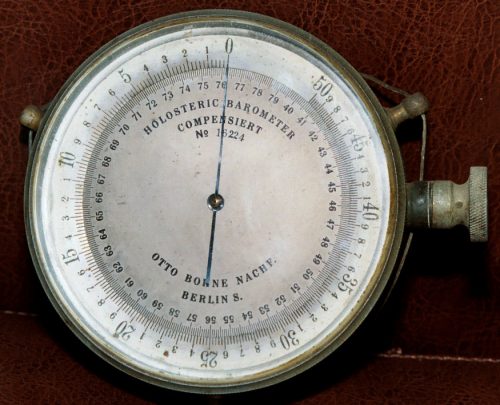 The following concerns a question in a physics degree exam at the University of Copenhagen:
The following concerns a question in a physics degree exam at the University of Copenhagen:
The test question was: “Describe how to determine the height of a skyscraper with a barometer.”
One student replied: “You tie a long piece of string to the neck of the barometer, then lower the
barometer from the roof of the skyscraper to the ground. The length of the string plus the length of the
barometer will equal the height of the building.”
This highly original answer so incensed the examiner that the student was failed immediately. The
student appealed on the grounds that his answer was indisputably correct, and the university appointed an
independent arbiter to decide the case.
The arbiter judged that the answer was indeed correct, but did not display any noticeable knowledge of
physics. To resolve the problem it was decided to call the student in and allow him six minutes in which
to provide a verbal answer that showed at least a minimal familiarity with the basic principles of physics.
For five minutes the student sat in silence, forehead creased in thought. The arbiter reminded him that
time was running out, to which the student replied that he had several extremely relevant answers, but
couldn’t make up his mind which to use. On being advised to that time was up the student scribbled down
some notes and turned it over to the arbiter.
This is what the paper said. “You could take the barometer up to the roof of the skyscraper, drop it over
the edge, and measure the time it takes to reach the ground. The height of the building can then be
worked out from the formula H = 0.5g x t squared. But this would be bad luck for the barometer.”
The arbiter looked at the professor, shrugged his shoulders and said � �this is not the answer that you
were expecting but it is a correct answer and it does demonstrate knowledge of physics.� The arbiter
ruled that the student should be given a passing grade.
After the professor left the room, the arbiter looked at the student and said �You said you were thinking of
several answers � what were they?�
�Well, if the sun is shining you could measure the height of the barometer, then set it on end and measure
the length of its shadow. Then you measure the length of the skyscraper’s shadow, and thereafter it is a
simple matter of proportional arithmetic to work out the height of the skyscraper.”
“But if you wanted to be highly scientific about it, you could tie a short piece of string to the barometer
and swing it like a pendulum, first at ground level and then on the roof of the skyscraper. The height is
worked out by the difference in the gravitational restoring force T =2 pi square root (l /g).”
“Or if the skyscraper has an outside emergency staircase, it would be easier to walk up it and mark off the
height of the skyscraper in barometer lengths, then add them up.” “But since we are constantly being
exhorted to exercise independence of mind and apply scientific methods, undoubtedly the best way would
be to knock on the janitor’s door and say to him ‘If you would like a nice new barometer, I will give you
this one if you tell me the height of this skyscraper’.”
After he had spouted off several of these the arbiter asked the student �You do know the answer the
professor wanted don�t you.� The student replied �Of course I do, I just don�t like people telling me how
to think.�
The student was Niels Bohr, the only Dane to win the Nobel Prize for Physics.






